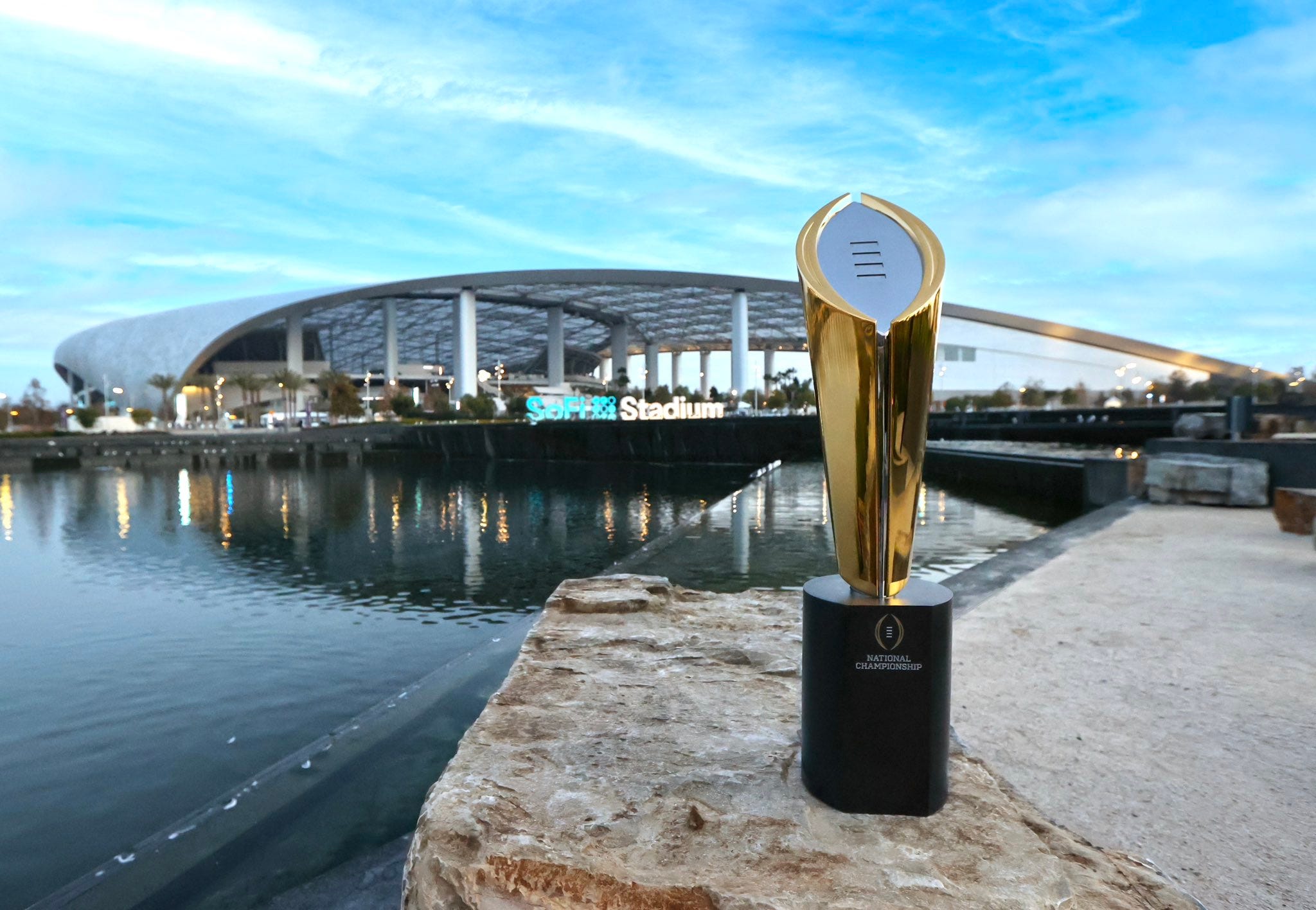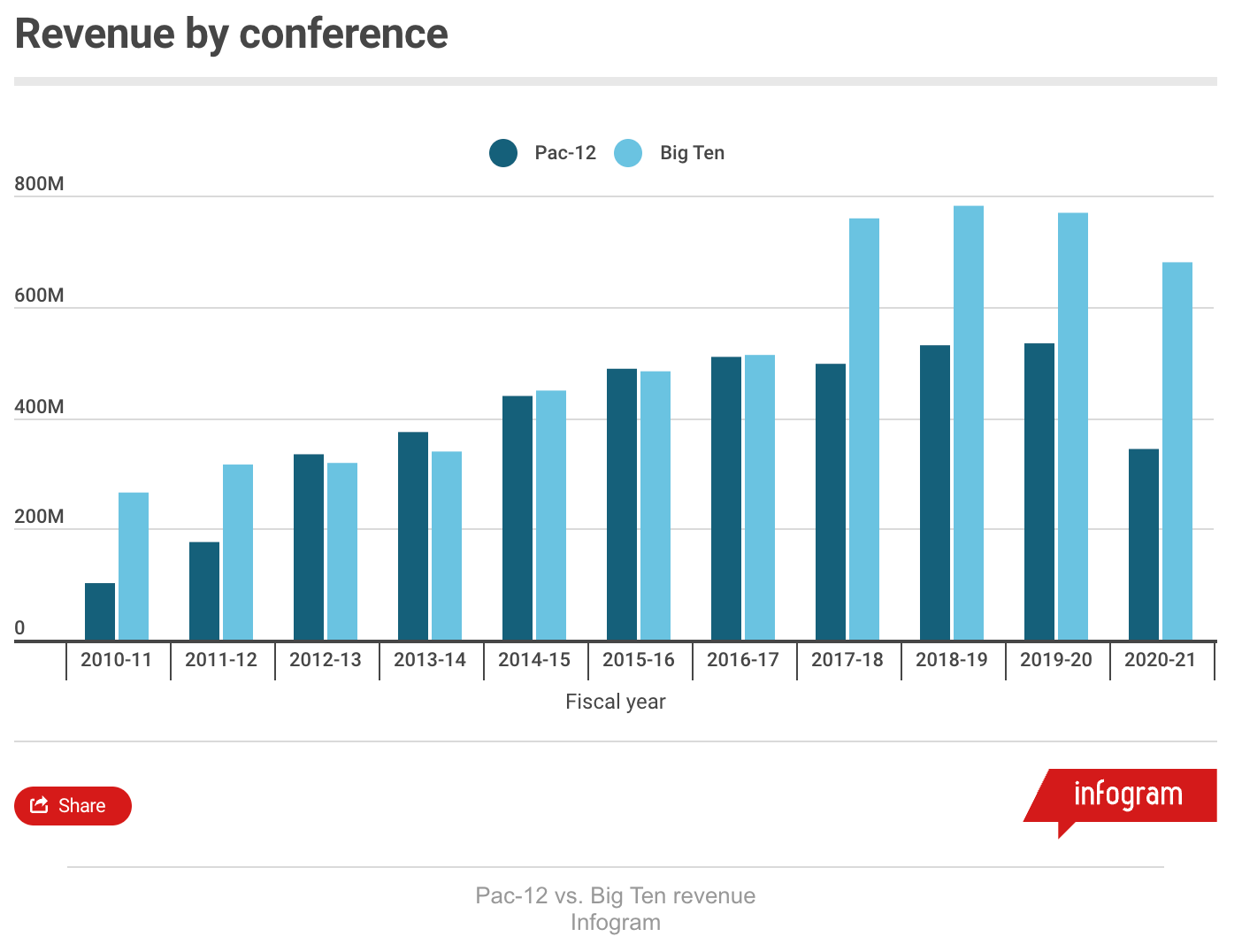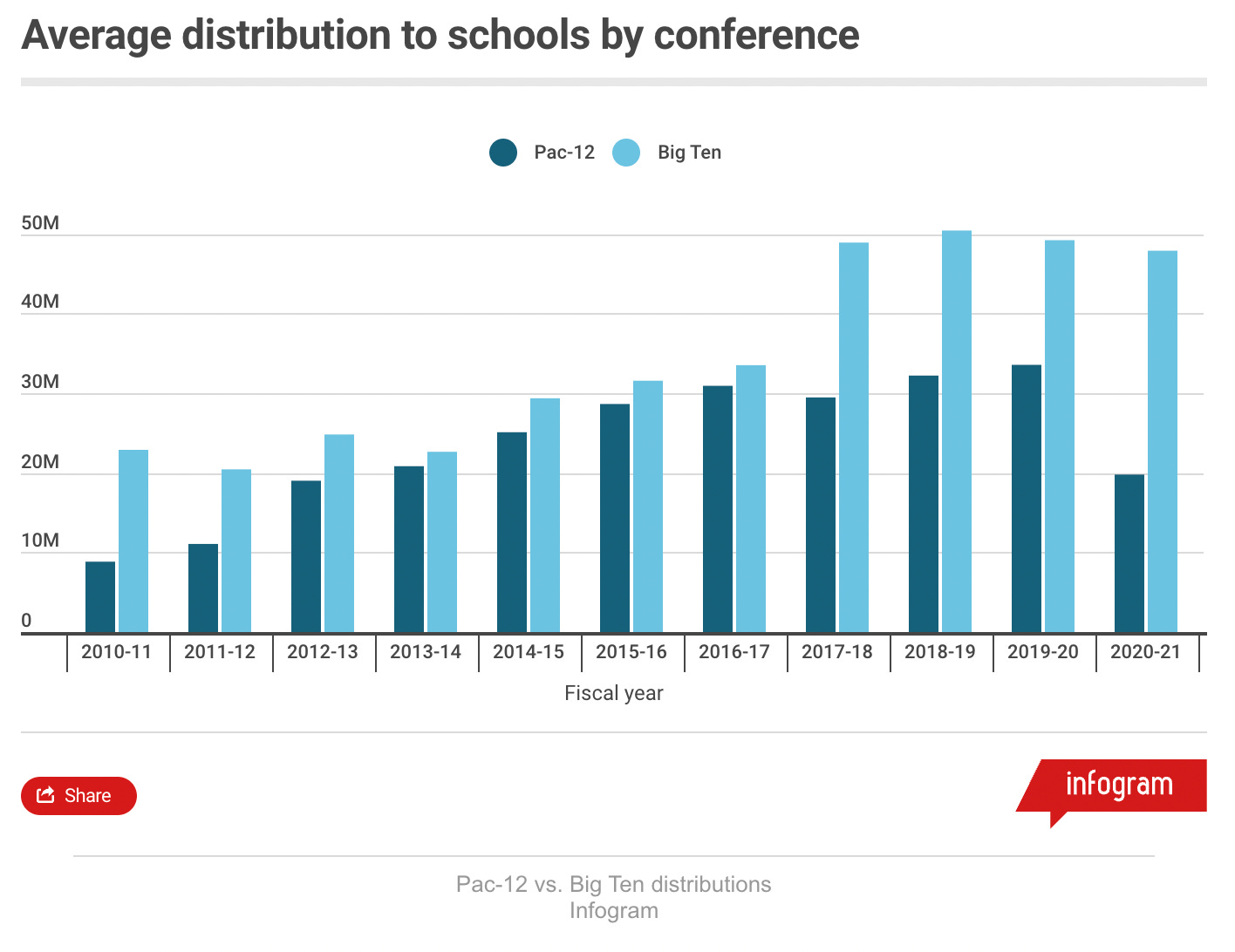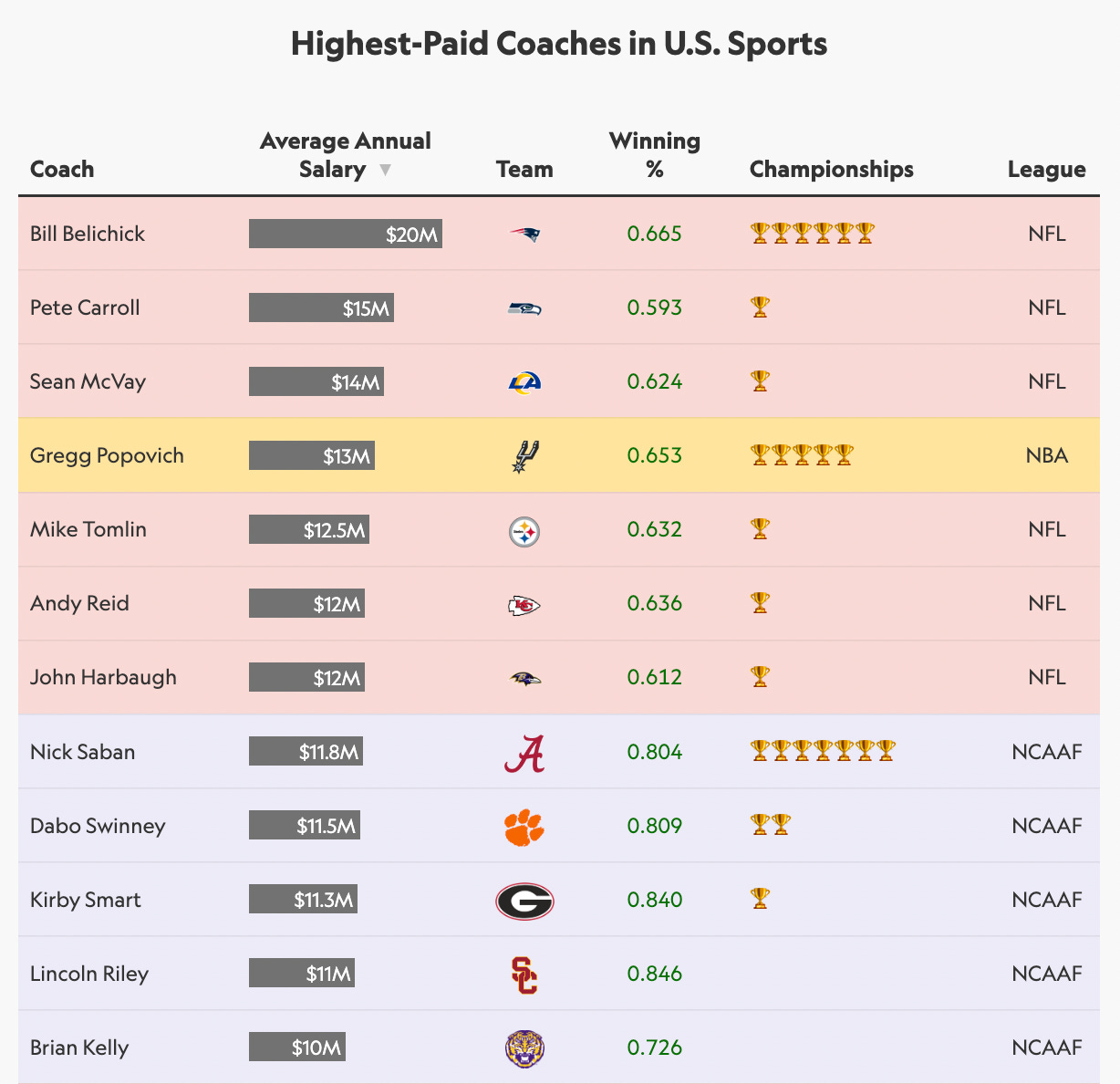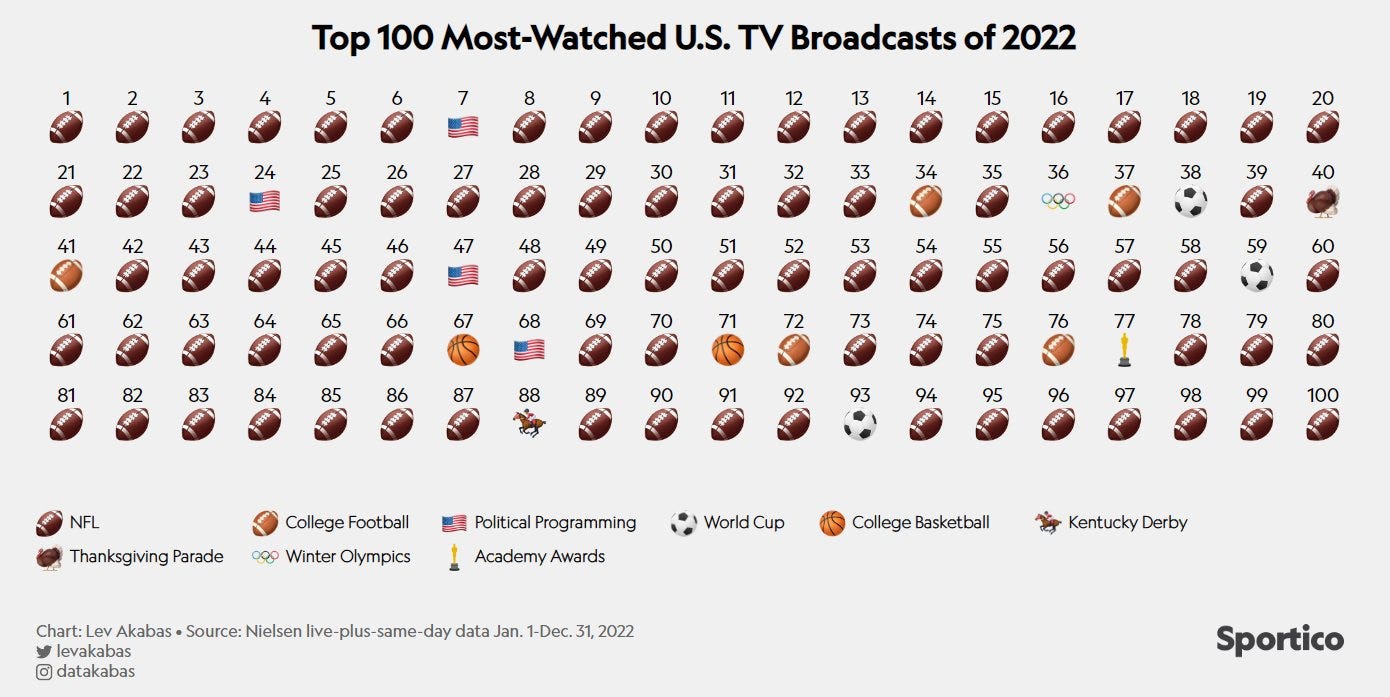The Future Of College Football Is Worth Billions
Huddle Up is a 3x weekly newsletter that breaks down the business and money behind sports. Subscribers include investors, professional athletes, team owners, and casual fans. So if you are not already a subscriber, sign up and join 78,000+ others who receive it directly in their inbox each week — it’s free. Today At A Glance:There is only one word to describe college football over the last several years: chaotic. We have seen conference realignment, multi-billion-dollar media rights deals, NIL becoming the Wild West, and coaching contract extensions that are big enough to make their NFL counterparts jealous. So with No. 1 Georgia and No. 3 TCU facing off in tonight’s National Championship game, today’s newsletter will break down everything you need to know about the future of college football. I’m talking about the finances behind a 12-team College Football Playoff (CFP), the real reason so many schools have decided to switch conferences, and why coaching salaries will only get bigger. Enjoy! Today’s Newsletter Is Brought To You By Sorare!Sorare is one of the fastest-growing companies in sports. Backed by superstar athletes like Lionel Messi, Kylian Mbappé, Rudy Gobert, Aaron Judge, and Serena Williams, they have built blockchain technology that allows fans to collect officially licensed NFT-backed player cards. Sorare, which started in Europe with fantasy football games, recently launched exclusive licensing deals with the MLB/MLBPA and NBA/NBPA to create a custom fantasy game for each sport. The concept is simple: Sorare lets you buy, sell, trade, and earn digital trading cards of your favorite players. But rather than just looking at them as a digital collectible, you can use these trading cards to enter fantasy sports competitions for prizes & rewards. So use my link below for a free limited card — it’s free to get started! Expanded College Football Playoff (CFP) in 2024Did you know that Division I FBS football is the only college sport for which the NCAA does not sanction a yearly championship event? Basketball, baseball, softball, soccer, lacrosse, ice hockey, cross country, volleyball, gymnastics, wrestling, and more all have NCAA championship events — but not college football. This has led to what feels like a constantly changing process. For decades, the champion of college football was determined by the AP Poll and the Coaches Poll, which often left people frustrated and even led to many years of dual champions. This changed in 1997 when the six biggest conferences joined forces to create the Bowl Championship Series, otherwise known as the BCS. They put together a complex formula that awarded teams a specific number of points based on their performances throughout the year, and the top two teams were then pitted against each other for a winner-take-all championship game. The winner of the game was recognized as National Champion by the Coaches Poll, but the AP Poll did not always agree. This caused more fan frustration — did the best team really win the National Championship? — and it eventually led to the creation of The College Football Playoff (CFP). The CFP was introduced in 2014. The idea was to replace algorithms with a 13-member committee to select and seed four teams to take part in the CFP. This opened the championship window to four teams (instead of two) and increased revenue for everyone along the way. Current College Football Playoff (CFP) 4-Team Overview
This new format was an immediate success. The very first CFP National Championship was won by No. 4 seed Ohio State, proving that lower-seeded teams could win national championships if given the opportunity. But more importantly, this drastically increased revenue across the board. For example, ESPN’s current deal with the CFP pays about $470 million per year, and they also have separate contracts with the Rose, Sugar, and Orange bowls that add up to more than $600 million annually. So while the initial goal was never to expand the playoff beyond four teams, those involved at the highest level of college football have seen the money that can be generated by expanding the tournament and decided to do precisely that. Starting in 2024, The College Football Playoff (CFP) will expand from four to twelve teams. There will be four rounds instead of two, playoff games at on-campus stadiums, and a National Championship game at a neutral location. New College Football Playoff (CFP) 12-Team Format
This new format is interesting on several levels. First, after kicking off the inaugural CFP with more than 34 million viewers in 2014, viewership has declined by an average of 5.2% during each of the last eight seasons — even dipping below 20 million in 2020. College Football Playoff National Championship Viewership History
Of course, basic supply & demand principles would tell you that increasing the number of games should only drive viewership lower. But the CFP committee is betting that the inclusion of additional fan bases will bring more eyeballs to their product — and the increased revenue doesn’t hurt either. Under their current agreement, ESPN owns the rights to the first two years of the 12-team playoff, and the extra CFP games are projected to bring in $450 million of additional gross revenue. But this is where it gets interesting — because many people expected the CFP to explore a two-network deal similar to the NFL (aka sell games to both ESPN & Fox) starting in 2027. This could reportedly be worth $2.2 billion annually, increasing the average conference payout from $103 million to $323 million per year. Conference Shakeups Bring Big Money Media DealsIn addition to the restructuring and expansion of the CFP, there were also quite a few notable conference changes announced last year, including moves across the Pac-12, Big 10, Big 12, SEC, and more. For example, USC and UCLA are set to leave the Pac-12 and join the Big 10 Conference beginning in 2024. This gives the Big 10 a true coast-to-coast conference, and they sweetened the deal by providing both schools their full financial shares immediately, unlike Nebraska, Rutgers, and Maryland, which each had to wait the full six years before vesting with full financial shares from the conference. This is a huge financial win for USC and UCLA compared to the Pac-12. Revenue By Conference (2020-21)
Average Distribution To Member Schools (2020-21)
Furthermore, as of right now, Oklahoma and Texas are set to join the SEC in 2025. They may make that move a year early and join in 2024, just in time for the 12-team CFP expansion, but regardless, the exit fee will be $50 million plus.
In response, the Big 12 announced that it was adding Brigham Young University, the University of Central Florida, the University of Cincinnati, and the University of Houston — but those schools don’t carry the same weight. Still, a flurry of media deals have been signed over the last couple of years, and these moves have had a severe financial impact across their corresponding conferences. Here’s a brief recap of where these conferences currently stand:
Coaching Salaries Are Only Going HigherAs you can tell, the overarching theme throughout college football has undoubtedly been an increase in money. Larger TV deals, an expanded college football playoff, conference realignment, and NIL regulation are primarily driving this increase. But the biggest beneficiary of this might end up being the coaches themselves. For example, high-profile coaches like Nick Saban, Dabo Swinney, Kirby Smart, Lincoln Riley, and Brian Kelly are already making more than the majority of NFL coaches — and these salaries should only go higher given the current tailwinds. So while many people continue to claim college football is all about student-athletes, it’s important to remind ourselves how big of a business college football really is. Individual conferences are signing multi-billion-dollar media rights deals. Several coaches are the highest-paid public employee in their respective states, and college football is quickly becoming one of the world’s most profitable sports leagues. The next few years should be a pretty clear reminder of that. Have a great day. I’ll talk to everyone on Wednesday. Enjoy this content? Subscribe to my YouTube channel. Your feedback helps me improve Huddle Up. How did you like today’s post? Loved | Great | Good | Meh | Bad Extra Credit: Live Sports Continue To Dominate US TV ViewershipLive sports remain the sole property keeping the cable industry afloat, accounting for 82 out of the top 100 most-watched US TV programs last year. That’s up from the previous record of 75 in 2021, and the NFL was this year’s biggest winner (again) — with 19 of the 20 most-viewed broadcasts in the United States. Huddle Up is a 3x weekly newsletter that breaks down the business and money behind sports. Subscribers include investors, professional athletes, team owners, and casual fans. So if you are not already a subscriber, sign up and join 78,000+ others who receive it directly in their inbox each week — it’s free.
Read Huddle Up in the app
Listen to posts, join subscriber chats, and never miss an update from Joseph Pompliano.
© 2023 |


